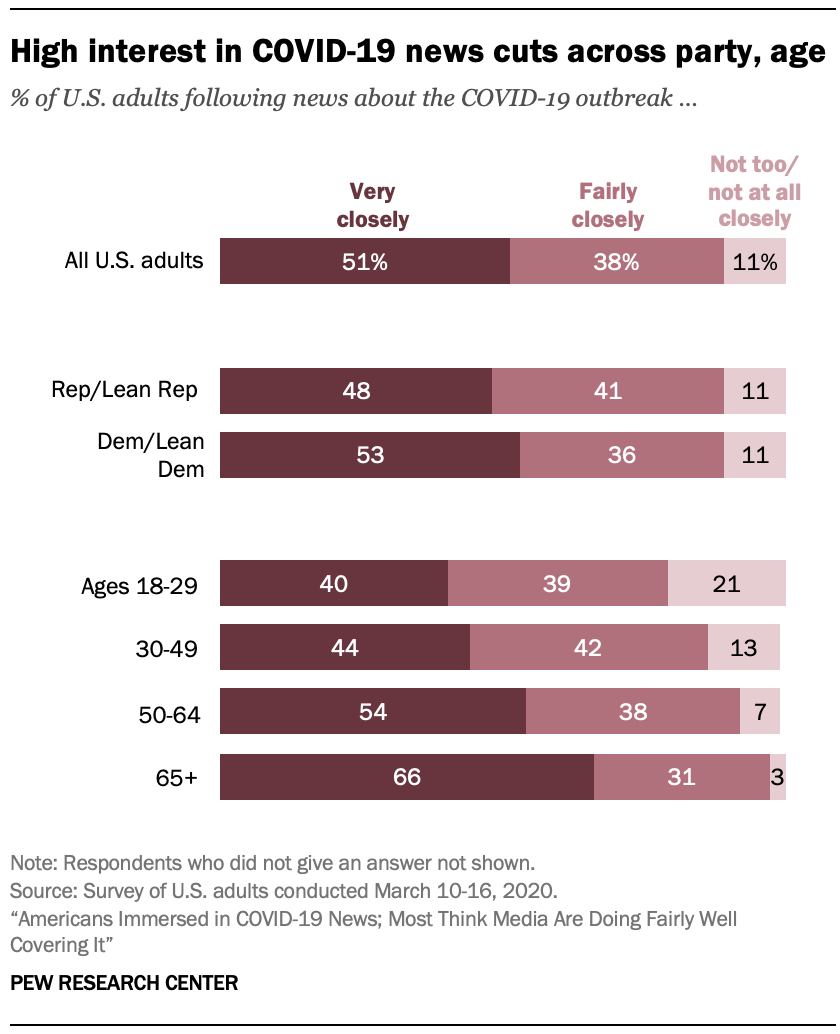
Americans are paying very close attention to news about COVID-19, the new strain of coronavirus that is upending daily lives and wreaking havoc on the stock market. About half of U.S. adults (51%) say they are following this news very closely, and another 38% are following it fairly closely.
This high level of attention cuts across both parties. About half of both Republicans and independents who lean Republican (48%) and Democrats and Democratic-leaning independents (53%) are following it very closely.
Older adults are following Coronavirus news a bit more closely than younger ones: Four-in-ten of those ages 18 to 29 and 44% of those 30 to 49 are following very closely, compared with 54% of those ages 50 to 64 and about two-thirds of Americans 65 and older (66%).
Republicans rate COVID-19 coverage from their own news sources far better than they rate the news media overall
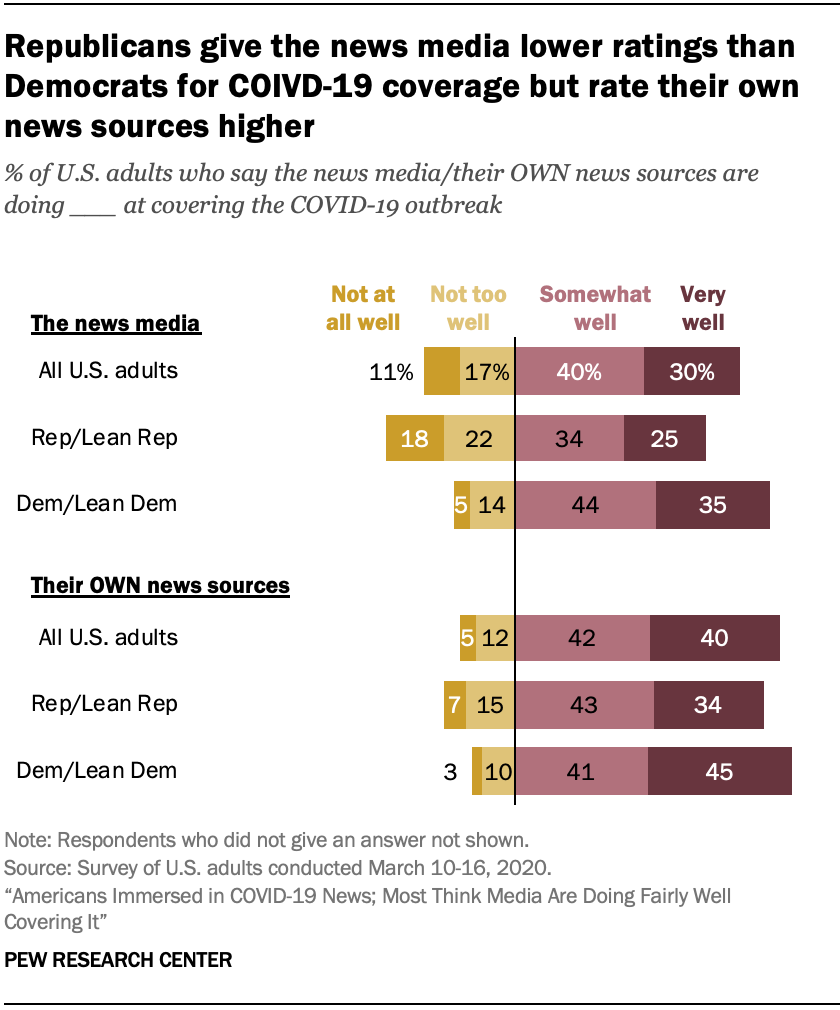
The American public gives the media fairly high marks for their coverage of the coronavirus. Fully 70% say the news media are doing very (30%) or somewhat well (40%), compared with about three-in-ten who say they are not doing well (29%). The marks get even higher when it comes to the specific sources people turn to most, with 82% who say their own sources are doing very (40%) or somewhat well (42%).
The positive assessment, however, does not come equally from both sides of the political aisle. Fully eight-in-ten Democrats and Democratic leaners say the news media are doing at least somewhat well covering the virus, including about a third (35%) who say they’re doing very well. A majority of Republicans and those who lean Republican (59%) say the news media are doing at least somewhat well (25% very well, 34% somewhat well), but 40% say the news media are doing not too or not at all well.
Republicans do, however, offer more positive marks for the news sources they turn to most than they do for the news media overall. About three-quarters (77%) say their own news sources are doing very (34%) or somewhat well (43%). About half as many Republicans offer negative assessments of their own news sources as say the same of the news media more broadly (22% vs. 40%). Meanwhile, Democrats’ ratings for their own sources line up pretty closely with their ratings of the news media overall.
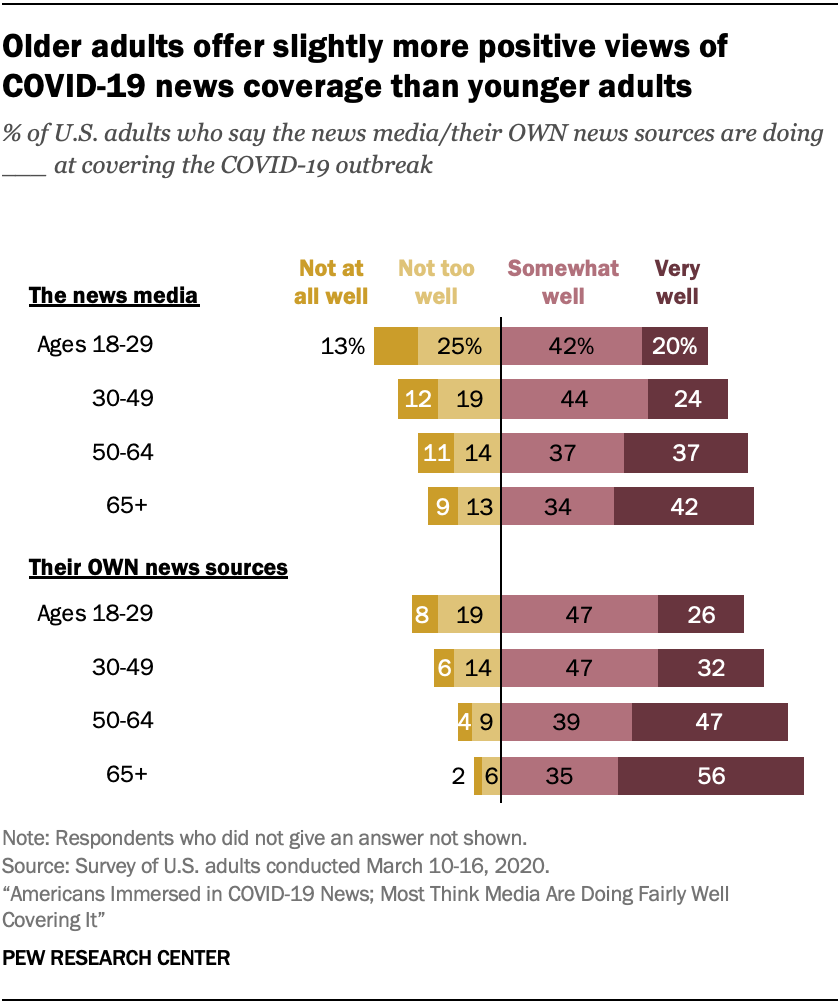
Some differences by age also emerge, with older Americans more likely to give high praise than younger ones. About four-in-ten adults ages 65 and older (42%) say the news media are doing very well covering the virus outbreak. That is roughly twice the share among 18- to 29-year-olds (20%). Adults ages 30 to 64 fall in between. Still, about six-in-ten or more of each age group say the media are doing at least somewhat well.
People’s assessments of their own news sources show the same general pattern across age groups.
Despite high marks, most think the media exaggerated the risks of COVID-19
A central question surrounding the outbreak has been the risks associated with the virus, a question often addressed in media coverage as well as in statements from political leaders and health experts.
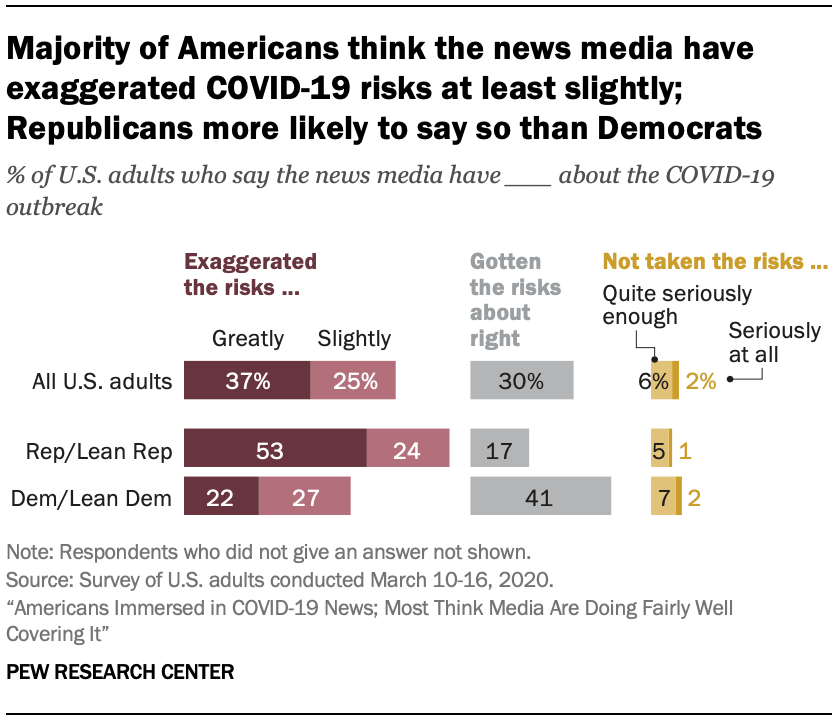
A majority of Americans think the news media have exaggerated the risks at least to a certain degree – about four-in-ten (37%) say the media greatly exaggerated the risks, while 25% say the risks have been slightly exaggerated. Only 8% think the news media have underplayed the seriousness of the risks. Three-in-ten feel the media have gotten the level of risk about right.
Republicans sense greater exaggeration from the news media than Democrats. About half (53%) say the news media have greatly exaggerated the risks associated with the virus, and another 24% say the news media have slightly exaggerated the risks. Fewer than two-in-ten (17%) say the news media have gotten it about right. Democrats, for their part, are more than twice as likely as Republicans to say the news media have gotten the level of risk about right (41%). Still, they are most likely to say the risks have been exaggerated (49% in all). (This survey question was also asked about Donald Trump, Democratic leaders in Congress and the CDC. Those responses also differ by party, the details of which can be found in this accompanying report.)
Most Americans say they have gotten consistent facts across their mix of news sources
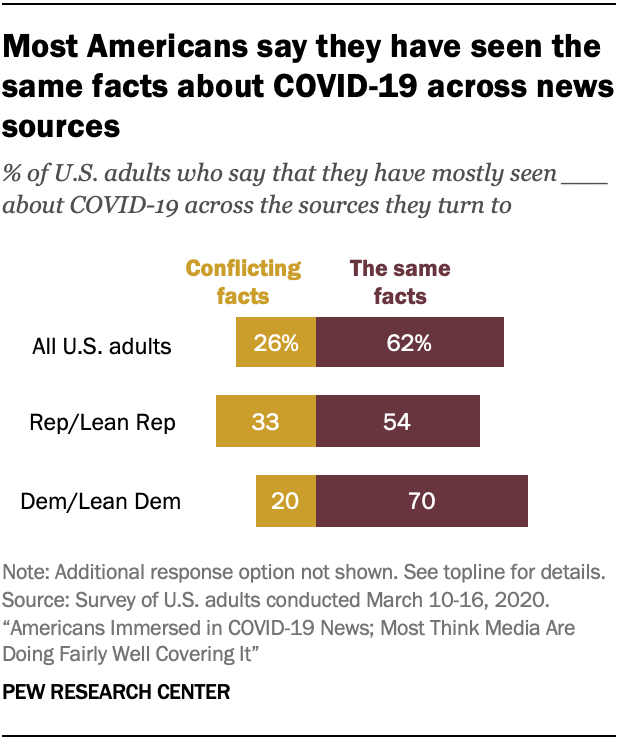
A majority of U.S. adults (62%) say the various sources they turn to have mostly provided the same set of facts about the coronavirus outbreak. Far fewer (26%) say they have seen conflicting facts. And about one-in-ten (11%) say they haven’t turned to multiple sources for this news.
Half or more of both parties say they’ve mostly gotten consistent facts across their mix of sources, though Democrats say this more than Republicans (70% vs. 54%). A third of Republicans say they’ve gotten conflicting facts, compared with 20% of Democrats.
Older adults are somewhat more likely than younger to say they have seen the same set of facts across their mix of news sources, though half or more of all ages express this sense: about two-thirds of those ages 50 to 64 (64%) and those 65 and older (67%), compared with 61% of 30- to 49-year-olds and 56% of 18- to 29-year-olds.




